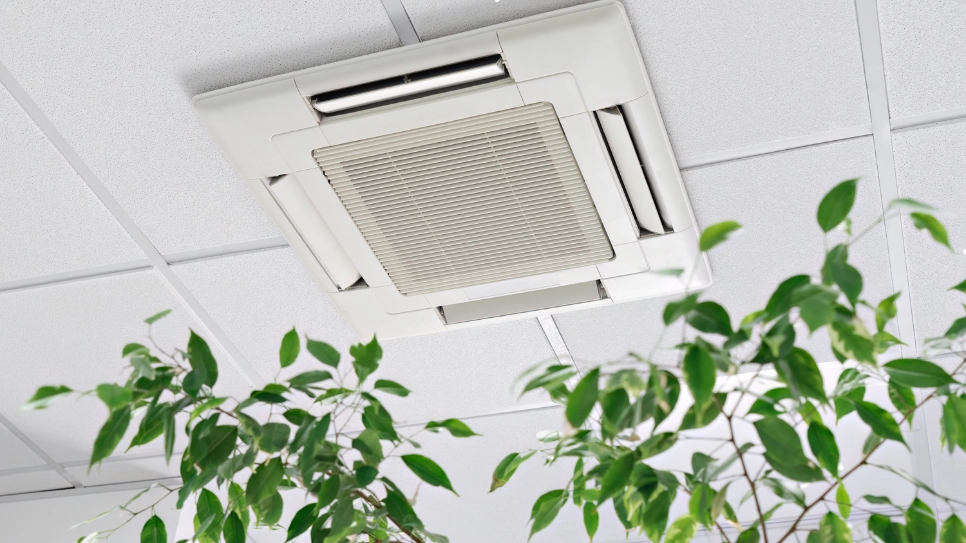Choosing the right air conditioning system can have a major impact on your home’s comfort, energy costs, and overall ambiance. Central and split air conditioning systems offer different advantages depending on cooling needs, budget, and structural considerations. This article explores key factors to help you decide which option best suits your home.
Cooling coverage
One of the main differences between central and split air conditioning is the area they cool. Central air conditioning systems are designed to cool the entire home through a network of ducts, making them ideal for large homes or spaces where consistent cooling for the entire home is preferred. Split air conditioners, on the other hand, offer room-specific cooling, allowing for more targeted temperature control.

More information about the price of air conditioning can be found in our cost guide.
Energy efficiency
Energy efficiency can vary significantly between central and split systems. Central air conditioning systems often consume more energy due to the need to cool an entire home, especially if ducts are not well-insulated. Split air conditioners, which cool specific rooms, tend to be more energy-efficient for targeted cooling since they avoid the energy losses common in ductwork. This can lead to savings on utility bills, particularly if only certain rooms need cooling.
Installation requirements
Installation needs differ substantially between the two systems. Central air conditioning requires ductwork throughout the home, making it easier to install in new builds or during major renovations. Split air conditioning systems, which consist of an indoor and outdoor unit connected by tubing, are more flexible and typically easier to install without extensive structural changes, making them a great choice for homes without existing ducts.
Cost of operation
The cost to operate central and split air conditioning systems depends on various factors, including energy efficiency, usage patterns, and home size. Central air conditioning systems may have higher operating costs if they cool the entire home regularly. In contrast, split systems allow for cooling only where needed, reducing energy consumption and saving money in the long term.

Read another one of our articles, which discusses the most common air conditioning issues.
Noise levels and aesthetics
Noise and aesthetics play a role in overall comfort. Central air conditioning systems are generally quieter, with most of the noisy components located outside the living area. They also integrate discreetly into the home, with vents rather than visible units in each room. Split air conditioning units, while often quieter than window units, have an indoor unit that may be visible in each room, potentially affecting aesthetics.
Key comparison table
To make your decision easier, we've compiled a quick-reference table below with all the key details you need to compare central and split air conditioning systems.
| Factor | Central air conditioning | Split air conditioning |
|---|---|---|
| Cooling coverage | Whole-home, uniform cooling | Room-specific, targeted cooling |
| Energy efficiency | Higher energy use, duct energy losses | Lower energy use, no duct losses |
| Installation | Requires ductwork, invasive | Minimal changes, easy to retrofit |
| Operating costs | Higher for large areas | Lower by cooling only needed rooms |
| Noise levels | Quiet indoors, vents blend in | Indoor units visible, newer models quiet |
When comparing the two systems, the choice ultimately comes down to individual cooling needs and factors. Request a quote for air conditioning on Procompare today and find the perfect cooling solution for your home!






